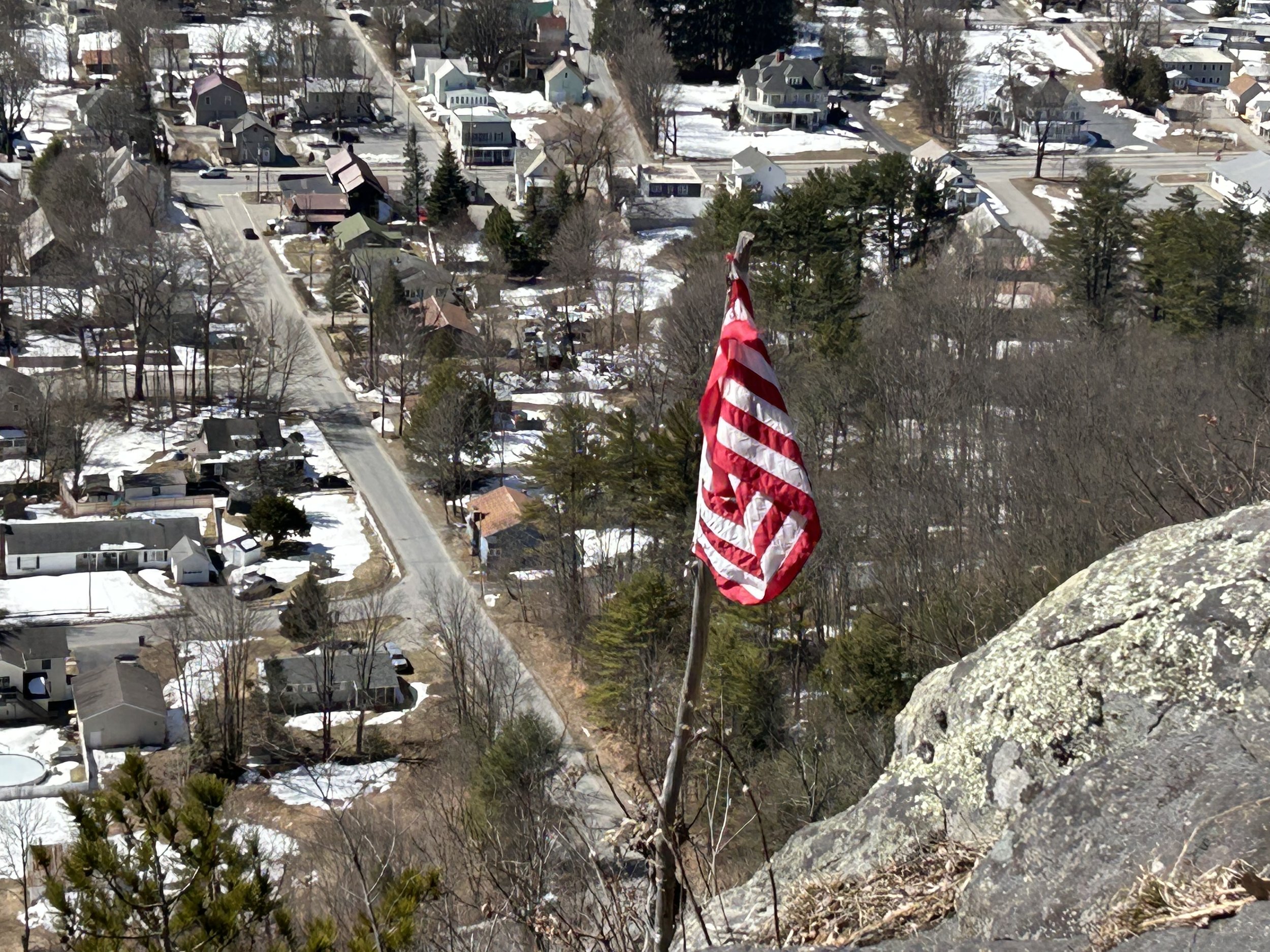Hackensack Mountain, Where Two Rivers Meet
Hackensack Mountain rises abruptly from this residential neighborhood.
Warrensburg's Hackensack Mountain is a geological marvel. An immense gray cliff facing Route 9 on the hamlet's west side, it rises so abruptly from a residential neighborhood it looks out of place. It makes me wonder: How did that get there?
We know what geologists tell us. The Adirondack Mountains were created a billion years ago by the collision of ancient continental tectonic plates called the Grenville Orogeny, which generated such immense pressure that it forced the rocks to bend and fold.
Hackensack is composed of gneiss, a rock that was once sedimentary, starting out as layers of sand, silt, and clay. Then high temperatures and pressures over millions of years recrystallized and rearranged the minerals, making the rock metamorphic, like granite.
You also may wonder why this peak in the southern Adirondacks has the same name as the county seat of Bergen County, New Jersey. That's a bit of a mystery, according to John Sasso, author of this history of the mountain.
"Hackensack” is a Native American term, but scholars differ on its origin and meaning, he says.
"A likely candidate is the Munsee term 'Achkincheschakey,' meaning 'where two rivers come together,' John adds. "The Munsee are a subtribe and one of the three divisions of the Lenape Indians who once lived along the upper portion of the Delaware River and other regions of southern New York as well as New Jersey and Pennsylvania. Since the Schroon River and Hudson River come together at the base of the Three Sisters, this confluence may have inspired the name - but this may not be the definite origin for the mountain's name."
Hackensack is as convenient for residents of Warrensburg to access as, say, Central Park is for residents of Manhattan. But the experiences are vastly different. When Bill Walker and I made the ascent in late March, parts of the trail were reminiscent of the Siamese Ponds Wilderness in Warren County's First Wilderness.
The view from Hackensack's summit is among the most impressive in the southern Adirondacks.
But there are two trailheads, and the one you choose will bear significantly on your experience. We parked in the lot off Prospect Street. That's going to be your longer route because you have to hike halfway around the base of the mountain to reach the trail to the summit. Had we instead entered from the Hackensack Avenue trailhead, we would have found a shorter and better-maintained route. John calls it "an easy hike of less than one mile to its summit."
That's good to know. The route we took is not one to hike late in the day. If you do, bring a headlamp. Blazes are few and far between, and you won't find a lot of signs. Those you do find tend toward the humorous.
People have been getting lost on Hackensack for more than a century, John points out. "A simple search on an online newspaper archive reveals dozens of newspaper reports about searches for people lost on Hackensack."
While the summit of Hackensack tops out at a relatively modest 1357 feet, the view from there is among the best you'll find in the southern Adirondacks. Consider especially its exquisite perspective of the Three Sisters. It also offers a great view of Crane Mountain, showing its massiveness in a way that few other perspectives do.
Note that Hackensack is a long plateau. Look closely toward its eastern end, and you'll see an American flag. There's a short side trail that leads to the flag, and to an even better view of the Three Sisters. As for the flag, Sasso says he has yet to find anyone yet who can tell him who put the flag there in the first place.
Whichever route you take to Hackensack's summit, you'll find tributes to Tony "Boom" Trapasso, a man who so loved hiking this mountain he ascended it 1500 times in his lifetime, 277 times in one year, and daily for 49 consecutive days. He died in 2022 at the age of 61 after a valiant battle with ALS.
Hackensack is known to Tony's grandchildren as "Papa Boom’s Mountain." If you ascend via the Hackensack Avenue trailhead, you will see a sign displaying his accomplishments at the beginning of the trail. As you climb, you'll hike along Papa Boom’s Path and Trapasso Tough Trail, the latter a steep and challenging tribute to its namesake.
Thanks to Erin Corr and Carmelina Albanese for their contributions to this story.
Along the Trail







